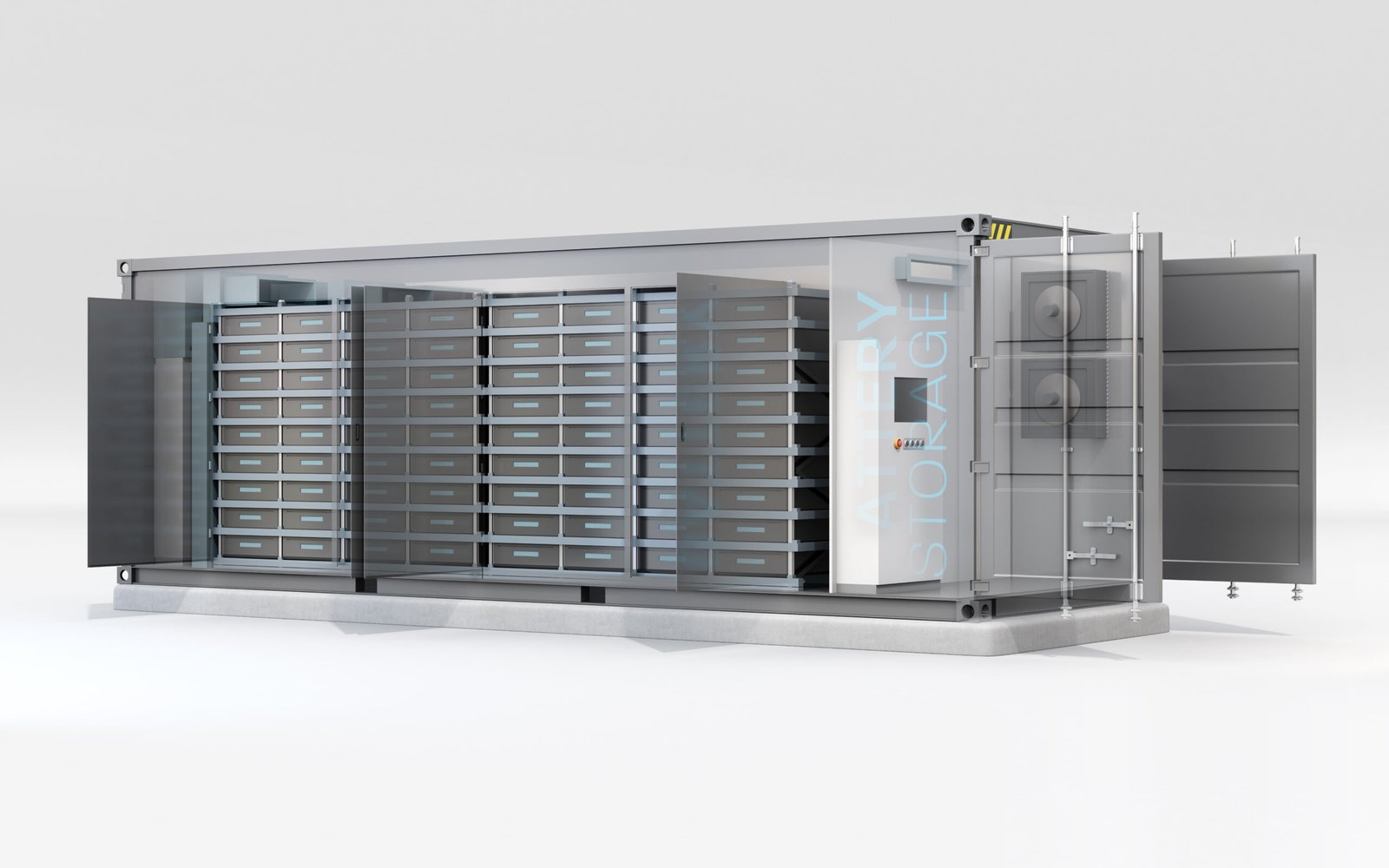Battery Energy Storage
Helping to deliver safe, secure, and reliable power that supports American energy independence.
Battery energy storage stands alone in its ability to enhance the flexibility and efficiency of our nation’s power grid. With no emissions, no pollution and a significantly smaller footprint size versus other power generation systems, the U.S. energy storage sector is witnessing extraordinary growth.
Every new energy storage project is not just an advancement in technology; it is a strategic investment in American energy dominance, ensuring a more resilient and efficient energy infrastructure for the future.
Battery Storage Explained
How BESS works to support the electric grid
Battery Energy Storage Systems (BESS) play a vital role in U.S. infrastructure by ensuring grid reliability, reducing energy costs, minimizing power outages, and by strengthening both our energy independence and our national energy security.
A BESS utilizes battery cells to capture and store surplus energy for future use. During periods of low demand, such as nighttime, energy that would otherwise go to waste is stored from the grid. When demand peaks, this stored energy is rapidly fed back into the grid, typically within milliseconds, helping ensure your homes, schools, hospitals and businesses have stable, reliable, uninterrupted power when they need it most.
Real money, real impact
$21B
Invested in communities
Battery storage projects have brought $21 billion in investment directly to American communities – funding construction jobs, local suppliers, and ongoing operations that boost local economies for decades.
Rapid growth you can see
10 Mil
Homes
In 2024 alone, America installed enough battery storage to power 10 million homes, with even more planned for 2025. That’s like adding backup power for entire states every single year.
The pipeline is huge
+30GW
In development
Projects currently under construction will provide backup power for 24 million American homes – that’s 1 in every 5 households getting more reliable electricity from battery storage.
Made in America momentum
25
New factories
In just two years, 25 new manufacturing facilities opened across the U.S. to build battery storage systems, creating thousands of good-paying manufacturing jobs in American communities.
Source: American Clean Power 2025
What's Inside a BESS?
Battery Cells
Thousands of lithium-ion batteries store energy like a giant phone battery.
Smart Controls
Computer systems that automatically manage charging, discharging, and safety.
Thermal Management System
Precision temperature control maintains safe operating conditions, preventing overheating and ensuring reliable, worry-free performance.
Safety Sensors
Intelligent BESS safety sensors provide 24/7 monitoring with built-in redundancies, ensuring the battery system operates safely and efficiently with complete peace of mind.


How BESS Works
24/7 grid support
BESS acts like a shock absorber for the electrical grid, instantly responding to keep your power steady and reliable. If voltage drops or spikes, the system reacts in milliseconds to keep your lights from flickering.
When electricity is plentiful
The battery system stores energy during times when there’s lots of electricity available – like overnight when most people are sleeping.
Waiting for the right moment
The stored energy sits safely in the batteries, ready to spring into action at a moment’s notice. The system remains on standby, prepared to respond in milliseconds when called upon by the grid to provide instant power support or stabilization.
When demand is high
During peak times – like hot summer evenings when everyone’s running air conditioning – the batteries release their stored energy back to the grid nearly instantaneously, powering homes and businesses when electricity is in highest demand.
Ready for the next cycle
Once the peak demand period ends, the system is ready to charge up again and repeat the cycle – day after day, helping keep your power reliable and affordable.
Benefits of BESS: Money to your community, money in your pocket, a more stable grid
Supports Economies
Local tax revenue from BESS projects are a boon for local economies, broadening tax bases and reducing local tax burdens without needing a large footprint or adding pressure on other governmental services.
Saves Money
By storing energy during times when electricity prices are low and releasing it during peak demand, BESS projects can significantly lower costs for utilities. This, in turn, translates to reduced electric bills for both families and businesses. Additionally, BESS helps to ease the burden on overloaded electric infrastructure, thereby postponing the need for expensive upgrades.
Reduces Outages
For communities facing unpredictable weather or other disruptions, having cutting edge battery storage systems in place ensures the electrical grid is supported, and guarantees power is readily available when they need it most.
Enhances Grid Resilience
BESS systems respond to power fluctuations in milliseconds, not hours, continuously balancing supply and demand throughout the day to maintain stable grid conditions. This instant responsiveness prevents outages before they happen, keeping businesses running smoothly and communities powered reliably around the clock.
Attracts Investment
Communities with BESS systems showcase modern infrastructure and grid reliability that businesses demand. This advanced energy capability attracts manufacturers, technology companies, and developers looking for locations with dependable power and forward-thinking leadership.
BESS Safety: Are Battery Storage Systems Safe?
Fire-related incidents at BESS facilities are exceedingly rare. Although any potential fire risk is a valid concern, there has never been an incident at a battery energy storage facility that has spread beyond the secure confines of the site. Historical air and water quality monitoring and testing during and after fires at these facilities have consistently shown no risk to public health, neighboring properties, or the surrounding community.
Enhanced Safety Measures
Multiple layers of protection built-in
Today's battery systems include advanced thermal controls that prevent overheating, smart sensors that detect problems before they happen, and fire-resistant housing designed to contain any issues.
Top-Tier, Certified Equipment
Tested to the highest standards
Every component meets rigorous safety certifications - UL 1973 for individual battery cells and UL 9540 for complete systems. These are some of the highest standards used for electrical, fire and functional safety.
Proven Global Safety Standards
Built on years of real-world experience
NFPA 855, established in 2020, sets national safety requirements based on thousands of operating facilities. The standards are continuously updated using data from actual installations, ensuring each new project benefits from global lessons learned.
24/7 Professional Monitoring
Constant operator oversight
Every BESS facility has round-the-clock professional monitoring, secure perimeters, and multiple alarm systems. Local emergency responders receive specialized hands-on training before the facility opens, with annual refresher training to stay current on best practices.